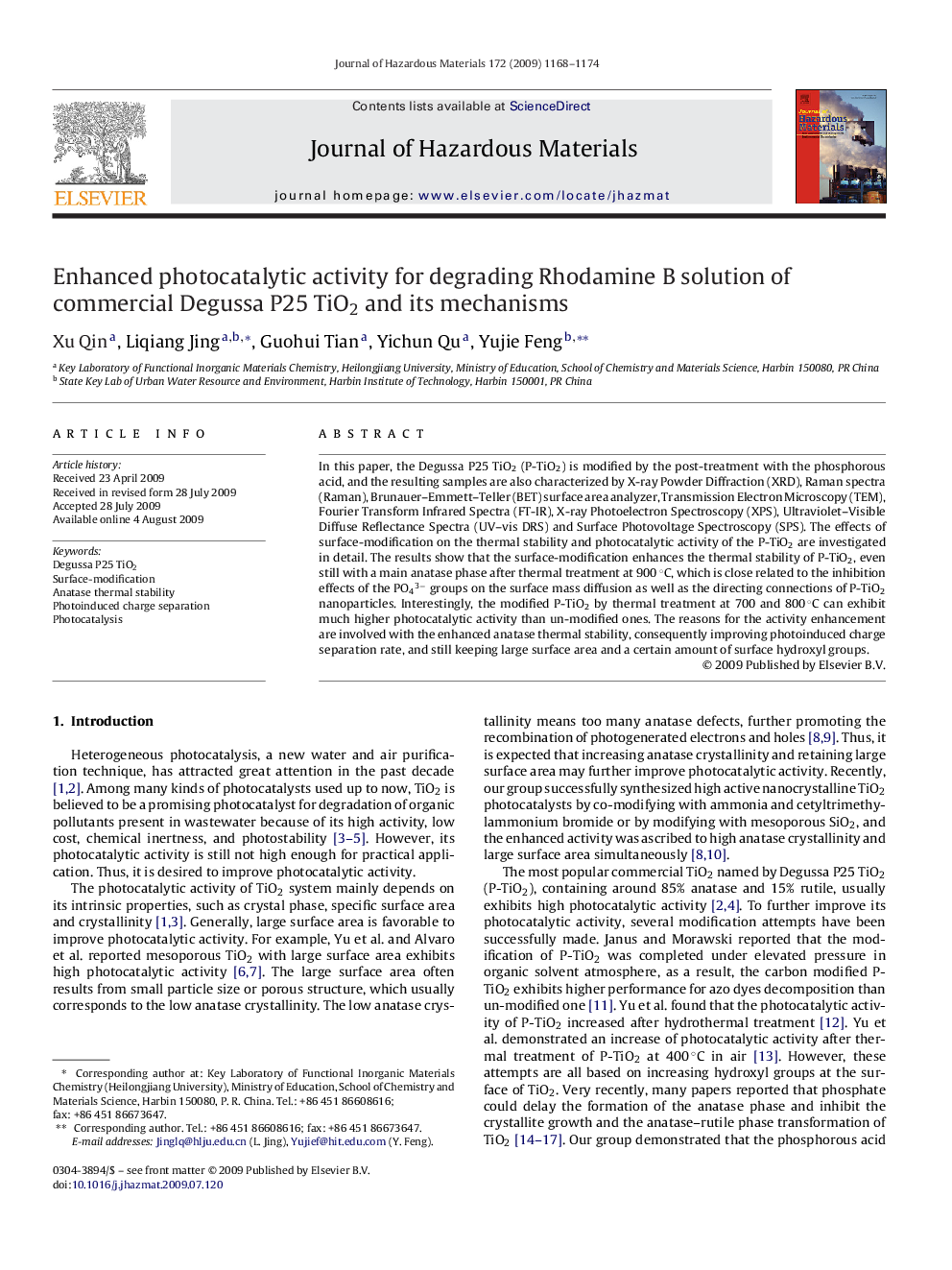| Article ID | Journal | Published Year | Pages | File Type |
|---|---|---|---|---|
| 580813 | Journal of Hazardous Materials | 2009 | 7 Pages |
Abstract
In this paper, the Degussa P25 TiO2 (P-TiO2) is modified by the post-treatment with the phosphorous acid, and the resulting samples are also characterized by X-ray Powder Diffraction (XRD), Raman spectra (Raman), Brunauer-Emmett-Teller (BET) surface area analyzer, Transmission Electron Microscopy (TEM), Fourier Transform Infrared Spectra (FT-IR), X-ray Photoelectron Spectroscopy (XPS), Ultraviolet-Visible Diffuse Reflectance Spectra (UV-vis DRS) and Surface Photovoltage Spectroscopy (SPS). The effects of surface-modification on the thermal stability and photocatalytic activity of the P-TiO2 are investigated in detail. The results show that the surface-modification enhances the thermal stability of P-TiO2, even still with a main anatase phase after thermal treatment at 900 °C, which is close related to the inhibition effects of the PO43â groups on the surface mass diffusion as well as the directing connections of P-TiO2 nanoparticles. Interestingly, the modified P-TiO2 by thermal treatment at 700 and 800 °C can exhibit much higher photocatalytic activity than un-modified ones. The reasons for the activity enhancement are involved with the enhanced anatase thermal stability, consequently improving photoinduced charge separation rate, and still keeping large surface area and a certain amount of surface hydroxyl groups.
Related Topics
Physical Sciences and Engineering
Chemical Engineering
Chemical Health and Safety
Authors
Xu Qin, Liqiang Jing, Guohui Tian, Yichun Qu, Yujie Feng,
